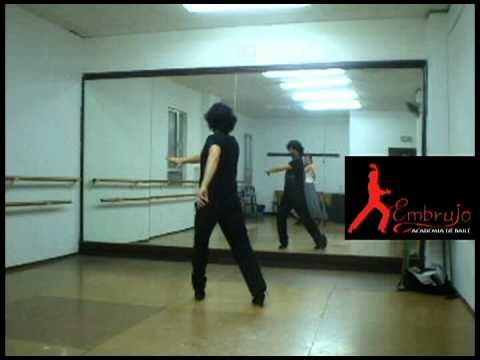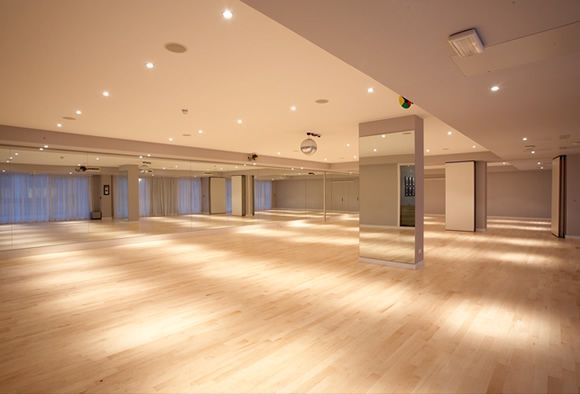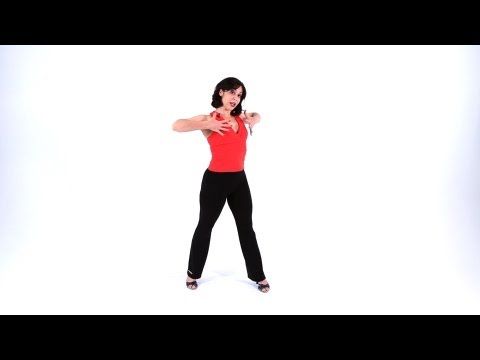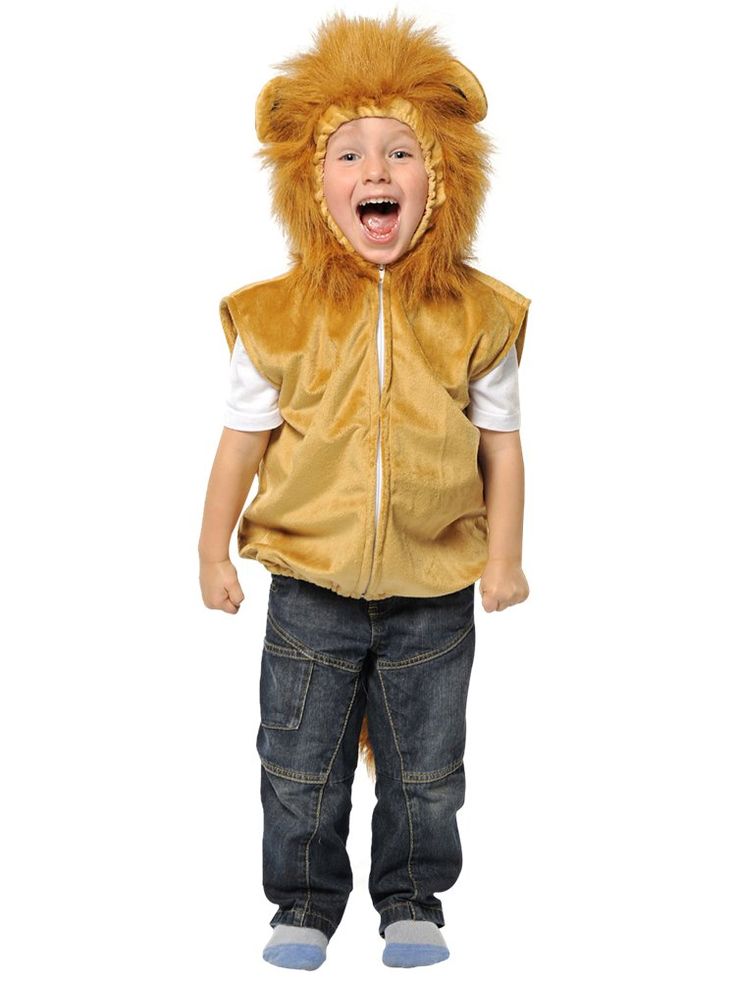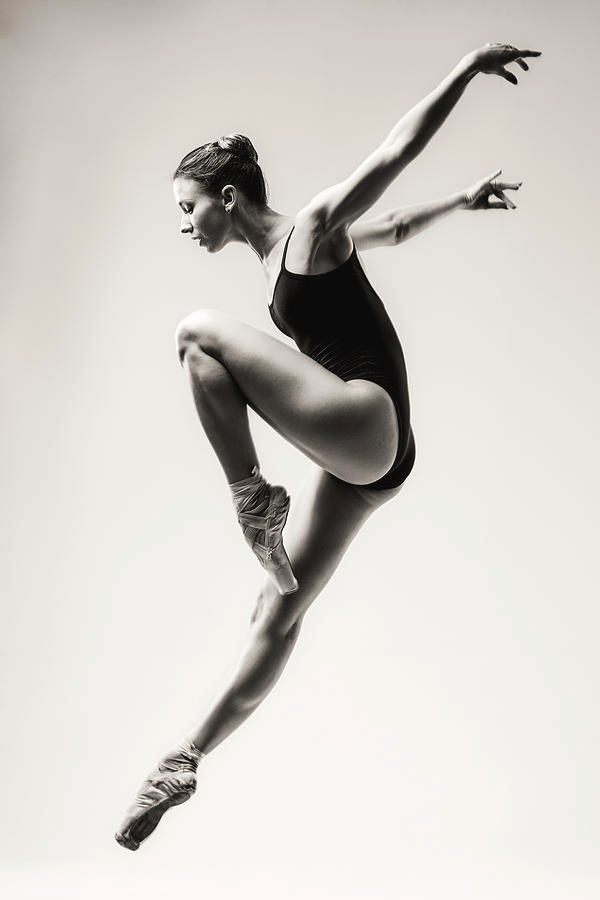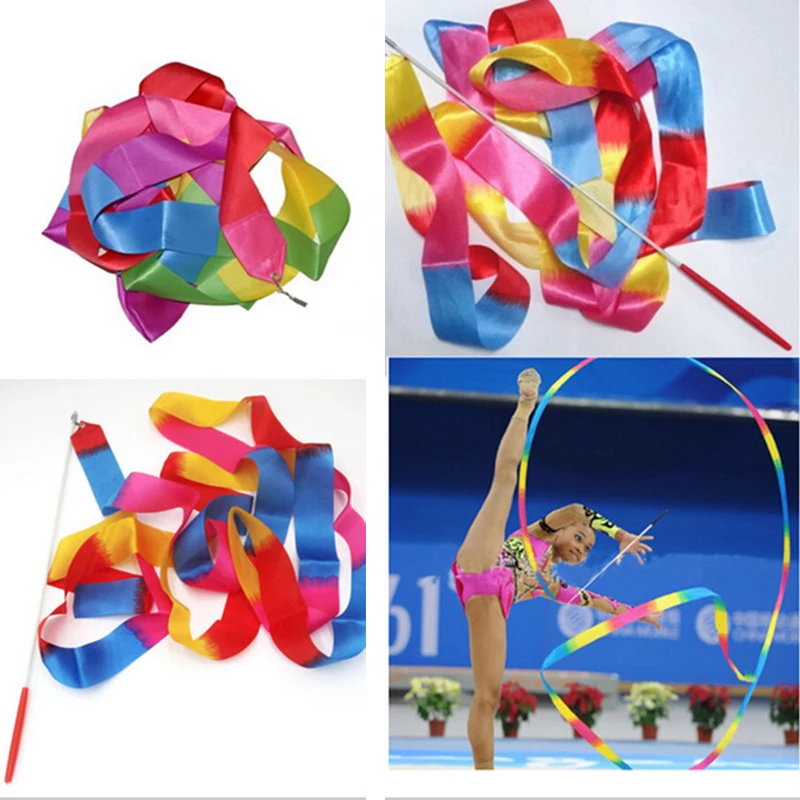How to make a mexican dance skirt
How to Make a Frilly and Florid Mexican Dance Dress
Want to go to a Mexican dance festival, but don’t have a dress to wear? Fear not, because we are going to tell you how you can make a Mexican dance dress at home.
One of the most eye-catching and sensational dresses is the Mexican dance dress. These traditional dance dresses have many variations, depending on which of the state of Mexico that it hails from. If you are thinking of attending a traditional Mexican dance festival, then you should definitely wear a Mexican dance dress. Although there are many designs and styles of Mexican dance dresses, one of the most stunning and colorful dress is from the state of Jalisco in Mexico.
This traditional dress consists of a very wide skirt that flares from the hips with a fitted bodice. The skirt is twirly with a lot of flare and is embellished with ribbons of different colors sewed along the hemline. The bodice features ruffles and is floaty and feminine. One of the most important features of a Mexican dance dress is its flaring skirt which should be voluminous. If you don’t want to spend a huge amount of money in purchasing a Mexican dance dress, then the next best thing to do is to make one.
Looking at the pattern of a Mexican dance dress, most of you would think that it is very intricate and would require considerable sewing skills to make. In a way that is true. But there are ways in which you can make it with minimum effort. The first thing that you need to do is to make the flared skirt and the bodice separately and then sew them together to make a dress. The bodice need not be made from scratch and you can, in fact, fashion an old blouse or T-shirt into the bodice of the dress.
Things Required
- Cotton fabric, 3 yards (in a color and pattern of your choice)
- Knit fabric
- Sewing machine
- Thread
- Scissors
- Fitted T-shirt
- Wide Ribbons (in two to three colors)
Procedure
The first thing that you need to do is to purchase the cotton fabric. It is best that you choose two to three different colored cotton fabric to give the dress a more vibrant look. Once you have all your supplies at hand, it is time to make the dance dress.
Once you have all your supplies at hand, it is time to make the dance dress.
- Wear the fitted T-shirt (an off white one would be ideal), and mark a point, 6 inches from the bottom of the t-shirt. Next, cut the T-shirt where you had marked it and keep both pieces of fabric aside.
- Wrap the bottom past of the T-shirt over your waist and make sure that it is snug. If it is not tight, then pull the fabric to one side and mark it with pins.
- Sew the T-shirt band where you had marked it with pins. Fold the band in half and sew it again. This will make the waistband more durable and also give you a better fit.
- Next, measure your hip length and multiply it by 1.5. Write down the number that you arrive on a piece of paper. Cut a piece of knit fabric measuring this width and your desired skirt length. (around 35” for an ankle length skirt).
- Sew the sides of the knit fabric together. This will make the underskirt of the dress.
- Cut 8 strips of cotton fabric, each fabric strip measuring 5.
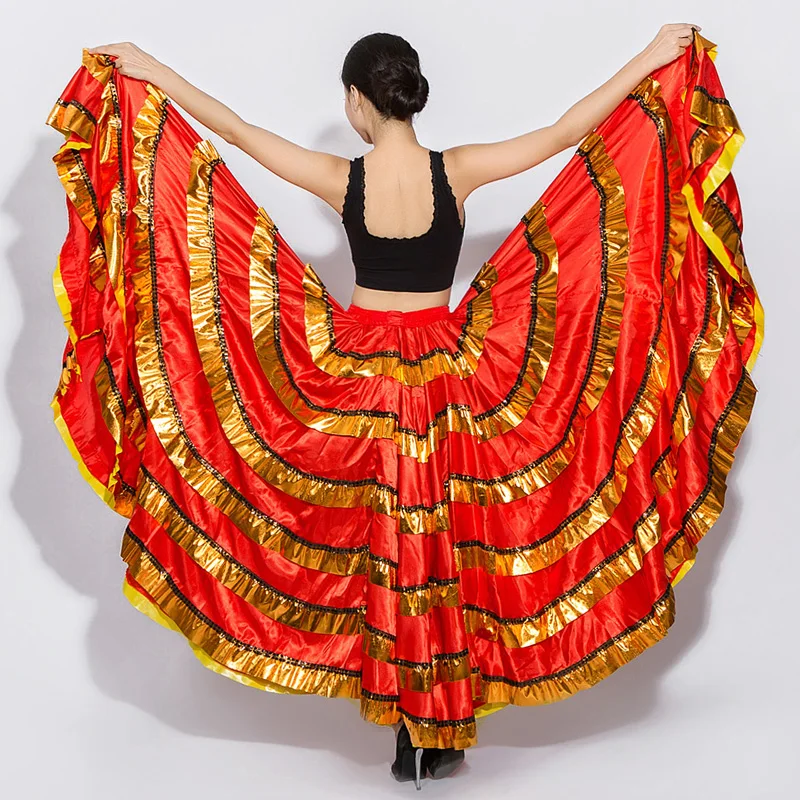 5” in width. The first fabric strip should measure about 1.5 times your hip measurement in length. The next strips to cut should measure 2 times your hip measurement and the rest should measure 3 times your hip measurement.
5” in width. The first fabric strip should measure about 1.5 times your hip measurement in length. The next strips to cut should measure 2 times your hip measurement and the rest should measure 3 times your hip measurement.
- Fold the first strip ¼ ” inside and sew a gathering stitch on one side. On the other side of the strip, hem the fabric for a finished look.
- Take both the edges of strip together and sew it to form a circle. Repeat the same procedure on all the other strips of fabric.
- Sew the first circular strip to the underskirt that you had made earlier and then sew it to the T-shirt waistband that you had made.
- Next, stitch the second circular strip of fabric on the underskirt, making sure that it is sewed in such a way that the underskirt is not visible.
- Sew the rest of the strips until you have an ankle length flared skirt.
- Finally, sew the T-shirt to the waist band of the skirt. To hide the stitches, apply fabric glue and adhere a long piece of colorful ribbon.
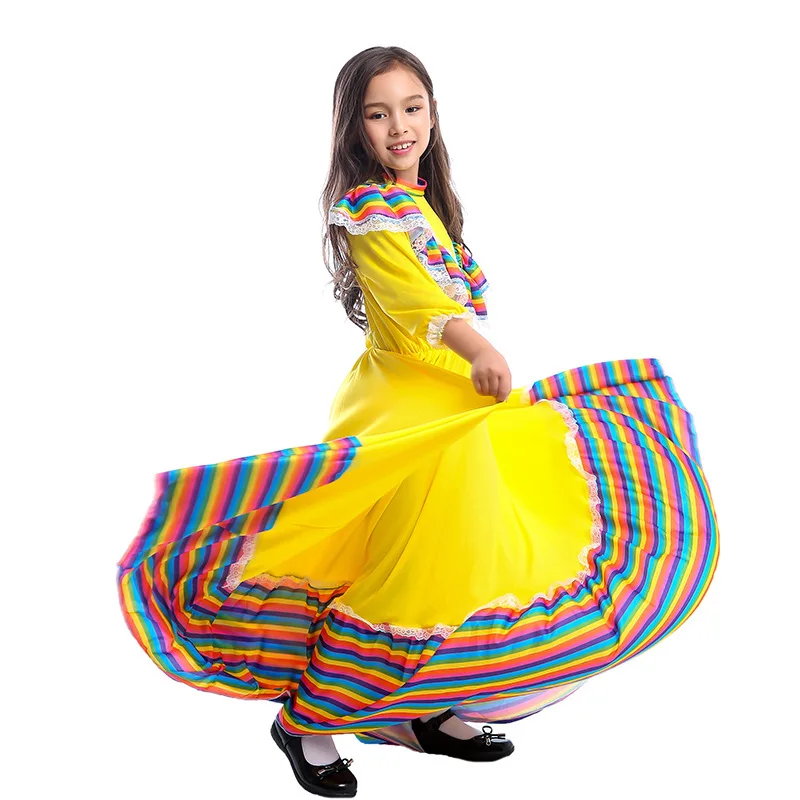
- Your Mexican dance dress is ready and you can embellish the bodice with rows of different colored ribbons that are sewed over it.
As you can see making a Mexican dance dress is not a hard task although it requires a bit of patience. But the results will be well worth it.
Like it? Share it!
Uncategorized
Get Updates Right to Your Inbox
Sign up to receive the latest and greatest articles from our site automatically each week (give or take)...right to your inbox.
Blog UpdatesEmail Address *
Mexican Dance Skirt - Etsy.de
Etsy is no longer supporting older versions of your web browser in order to ensure that user data remains secure. Please update to the latest version.
Take full advantage of our site features by enabling JavaScript.
Find something memorable, join a community doing good.
(152 relevant results)
Write to topic
|
Authors Mentions | |||||||||||||||||||||||||||||||||||||||||||
Duendo | Spanish dance studio of Victoria Kharionova
Duendo | Spanish dance studio of Victoria Kharionova | Sewing and craftsfirst page | greeting | concept | classes | photo album | contacts
sewing and crafts | links | downloads | useful reading
The most practical clothing for constant training is a skirt and blouse (dress is best left for performances).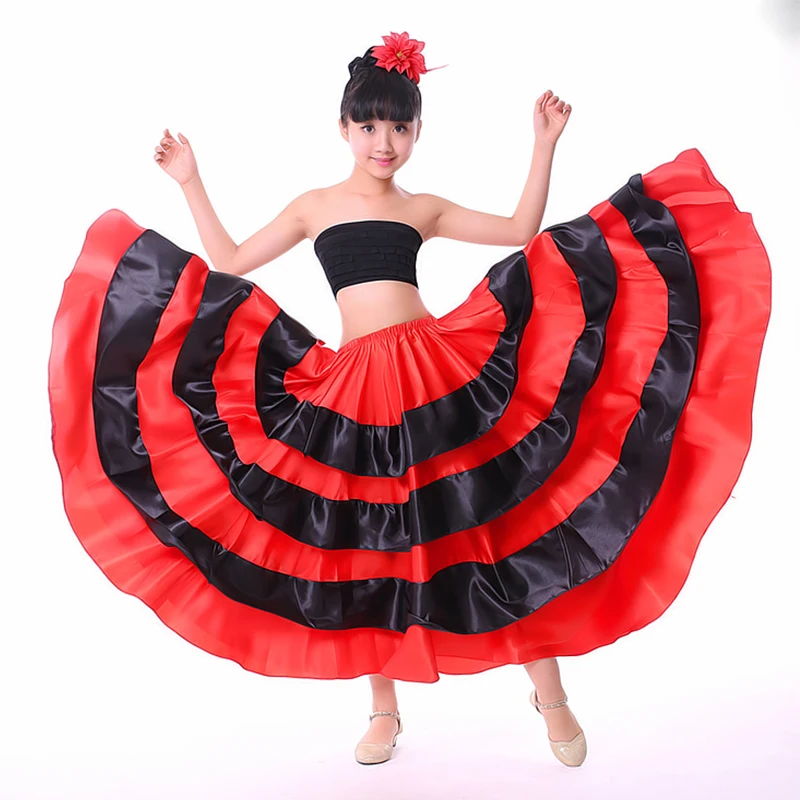 Like everything else, you can buy a skirt and a blouse, or you can make (or, at least, decorate) yourself, as well as dance accessories (shawls, fans) and jewelry.
Like everything else, you can buy a skirt and a blouse, or you can make (or, at least, decorate) yourself, as well as dance accessories (shawls, fans) and jewelry.
If you are inclined towards needlework, then below you will find some practical advice:
How to sew a flamenco dance skirt
- General recommendations
- Skirt with ruffles
- Flared yoke skirt
- Six-piece skirt
How to make an elegant flamenco blouse from an ordinary tank top
- General recommendations
- Cap sleeves
- Lantern sleeves
- Ruffled sleeves
Dance dresses
- General recommendations
- Several sketches
Accessories and decorations
- How to make an easy fabric rose
- How to make a dancing fan
Skirt
Flamenco dance skirt should be :
- wide,
- long,
- The cut of the skirt should emphasize the line of the hips.
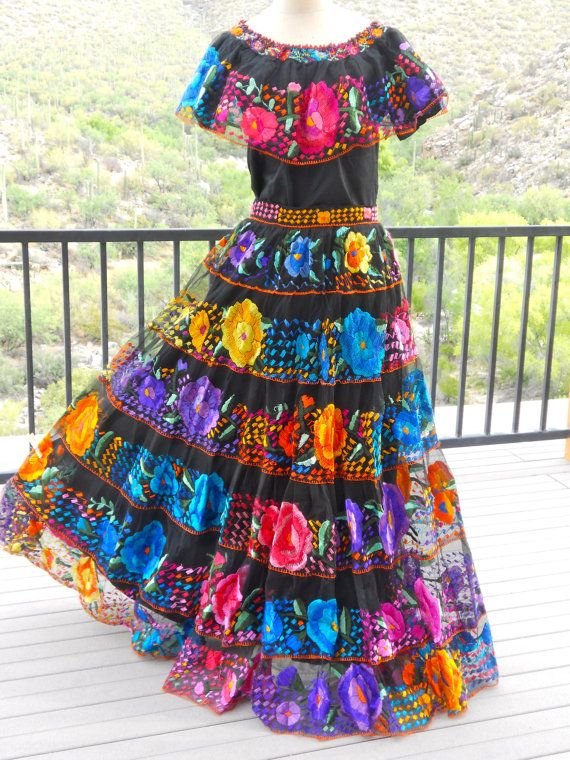
Note that for beginners, a skirt that is not too long (to mid-calf) is more convenient, you will need everything longer and more complex later. Skirt cut options can be different. We offer here three basic options, on the basis of which you can model a wide variety of styles:
- frilled skirt,
- flared yoke skirt,
- six-piece skirt.
General remarks to the silhouette of the skirt: The hip line can be drawn at different heights (maximum it can be lowered to the level of the palm above the knee, so we get a skirt with a train). It should be noted that the presence of a train means more complex work with a skirt in a dance. This option can be recommended not for beginners, but for staging "noble Sevillana". The skirt can be trimmed with ruffles or frills along the bottom edge or from the hip line to the bottom.
The easiest way to sew is a ruffled skirt :
This skirt is made from strips of fabric 15-20 cm wide on a wide belt or yoke (about 20 cm wide). The belt or yoke can be cut from the same fabric as the skirt itself or from knitted material (stretch). Basic principle: the length of the first strip of fabric after the belt or yoke (1 frill) is taken equal to one and a half to two waist circumferences:
The belt or yoke can be cut from the same fabric as the skirt itself or from knitted material (stretch). Basic principle: the length of the first strip of fabric after the belt or yoke (1 frill) is taken equal to one and a half to two waist circumferences:
waist circumference (OT) x 1.5 (2).
Each next frill is cut in the same way:
the length of the previous frill x 1.5 (2).
The number of frills can be different (4 or more), they can be cut from fabric cuts of different colors, patterns and even textures (for example: lace).
This skirt can be additionally decorated with braid or lace, which can also be sewn into the seam between the frills. A variant with multilayer frills is possible.
Tip: it is better to take the length of the first two (from the waist) frills equal to 1.5 the length of the previous frill (belt), and cut the next (3.4, etc.) with a factor of 2. This ensures a better fit of the skirt to the hips.
Approximate fabric consumption: 2-2.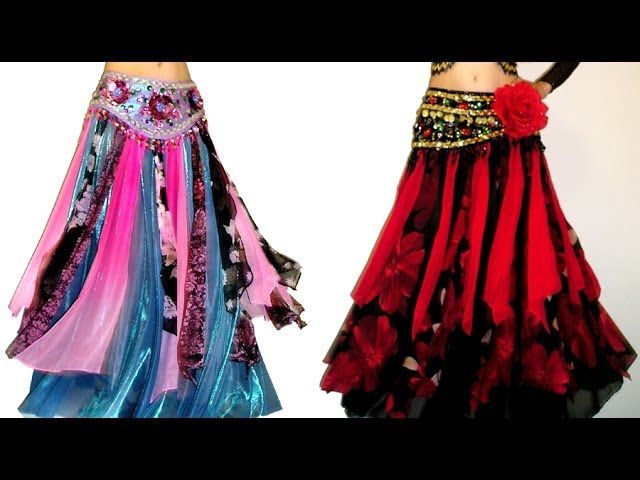 5 meters (with a width of 1.5 m, without additional elements)
5 meters (with a width of 1.5 m, without additional elements)
An example of a skirt assembled from frills ("sun"), sewn by Lyubov Sologubova according to a sketch by Vika Kharitonova.
[PDF pattern]
Flared skirt with yoke:
Flared skirt can be of different widths - from "semi-sun" to double "sun". Such a skirt is marked (it used to be called: is marked ) directly on the fabric. When cutting from a narrow web, the wedges are attached in the direction of the thread.
A semi-flared and 3/4 flared skirt is made with one seam in front (or two seams - it depends on the width of the fabric) and is a semicircle cut out of the fabric. In order for the flare in the "semi-sun" skirt with one seam to be evenly spaced, it is necessary to reduce the recess by 3 cm along the oblique line, and increase it by 2 cm along the fold (along the transverse thread), connect the points that determine the depth of the recess, i.e.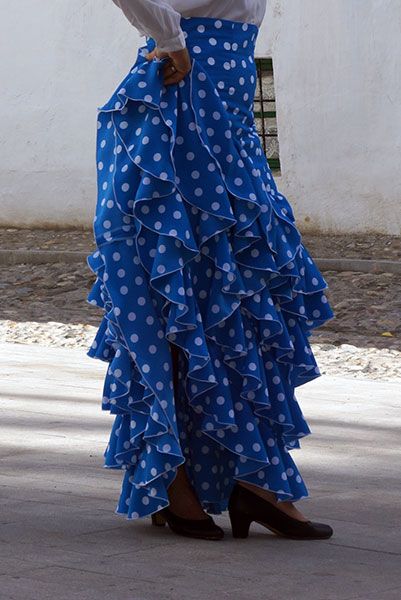 draw the line of the hips of the skirt. The line of the hips is drawn in the drawing as a semicircle equal to:
draw the line of the hips of the skirt. The line of the hips is drawn in the drawing as a semicircle equal to:
OB (thigh circumference) x 2.
Unlike a regular flared skirt, when modeling a skirt with a yoke, not the waist circumference is used for calculation, but the hip circumference. Along the line of the hips along the lobar and transverse threads, the skirt fits slightly.
Flared skirt "half sun".
Flared skirt "sun".
The yoke is cut out based on the circumference of the waist and the circumference of the hips. The height of the yoke depends on the height of the hip line. It can be made of knitted material, as well as decorated.
Tip: The front or side seams can be left unsewn, leaving a slit.
[PDF pattern]
Six-piece skirt.
A more elaborate skirt which is a flared skirt consisting of six separate pieces (wedges). The pattern drawing is based on the drawing of a straight two-seam skirt.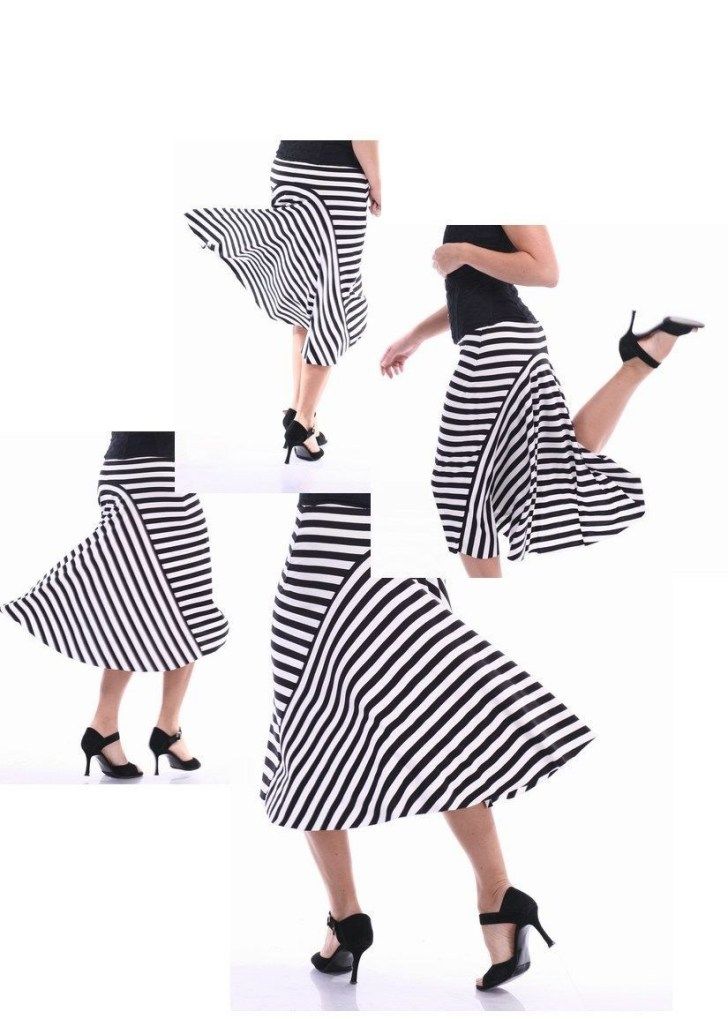
General notes on the silhouette: The skirt can be flared at different heights: the maximum “flare line” (at the O points) can be lowered to the level of the palm above the knee. The width of the wedges can also be different. Based on this pattern, a skirt with a train can also be modeled.
The width of the mesh (T-T1) is equal to the half circumference of the hips. The side seam is located in the middle of the mesh. The depth of the side tuck is calculated by the formula:
(POB - POT) / 2,
where FOB is the semicircle of the hips, POT is the semicircle of the waist. The back and front tucks are located 1/6 of the width of the mesh (i.e. half-girth of the hips) from points T and T1. The depth of the front and back tucks is calculated by the formula:
(POB - POT) / 4,
where FOB is the semicircle of the hips, POT is the semicircle of the waist. The “flared” line, i.e., points O, O1, O2, is determined depending on the desired shape of the skirt.
Tip: if you have a straight long skirt, you can alter it by inserting additional wedges.
[PDF pattern]
Blouse
First, the blouse should be a tight-fitting silhouette, with a round or V-shaped neckline. You can decollete the blouse both on the chest and on the back. The depth of the neckline depends on your courage or reasonableness.
Secondly, sleeves (if any) should allow full freedom of movement and not hide the wrists and hands. This is due to the variety of beautiful movements of the hands in general and the wrists and fingers, in particular.
So, sleeve options:
- sleeveless at all
- "wings", single or multilayer,
- "lanterns" with ruffles or with tight 3/4 sleeves,
- fully fitted sleeve (stretch) with or without frills, depending on the finish of the skirt,
- tight sleeve, flared at the bottom, but not too long, so as not to hide the brush.
All of the above applies to dresses.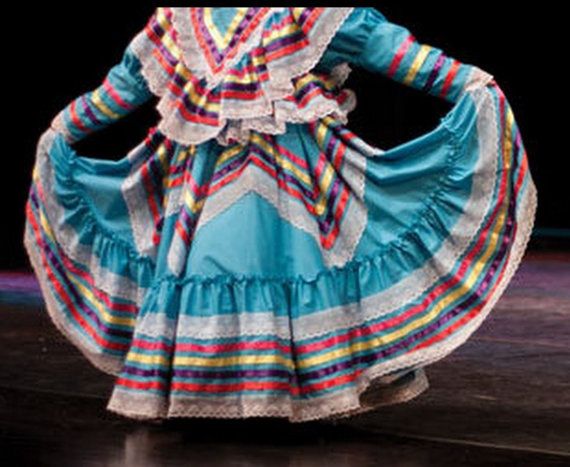
In what follows, we assume that we bought the fitted knitted blouse in a store. It can also be made by hand, but we will not consider this issue here. Is it possible to decorate it so that an elegant blouse turns out from an ordinary training top, when you look at it, Spanish dances immediately come to mind? We think it's possible if we get creative with the sleeves and work a little.
Cap sleeves
According to the pattern (left figure) of the short sleeve, we draw 8-10 vertical lines, parallel to the line of the elbow fold, at an equal distance from each other. Along these lines, the pattern is cut from the bottom of the sleeve to the collar (not completely) and moved apart by an equal amount.
Part of the lower half of the sleeve does not move apart so that there are no extra coattails at hand. Such a sleeve can be left free at the bottom, assembled for assembly, or an elastic band can be inserted into it. Experiment with fabric combinations of different colors and textures, as well as trimming the edge of the sleeve and neckline.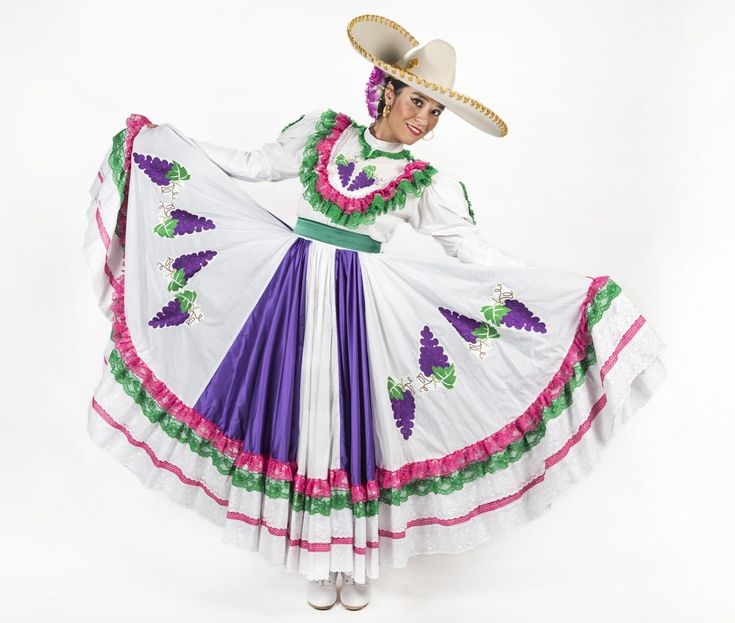
Lantern sleeves
On the pattern of a short sleeve, three vertical dotted lines are applied at the same distance from each other: along the line of the elbow fold, through the shoulder notch and to the right along the collar.
The bottom of the sleeve is made with an elastic band and decorated with lace or frills. A 3/4 sleeve can also be sewn to the "flashlight" sleeve, the bottom of which is additionally decorated.
Tip: you can make a "flashlight" sleeve, which has a denser gathering on the bottom than on the collar. To obtain such a sleeve, additional lines are applied to the already expanded pattern of the main sleeve, along which the pattern is again cut and moved apart.
Tight sleeve with ruffles
Training top with long tight sleeves can be additionally decorated with single or multi-layered frills, the color and shape of which can be tied to the skirt trim. This is the easiest way to make an elegant dance blouse out of an ordinary sweater.
[Sewing Patterns & Tips PDF]
Dress
Flamenco dance dress can be made on the basis of quite a variety of patterns. For example, as the basis for the bottom of the dress, you can use a pattern of a six-line skirt, to which the top is modeled. Only one thing is essential - the dress in its cut should not hamper you in the dance.
Among the traditional Spanish women's clothing, you can find models with a narrow upper part of the skirt (from the waist to the knee), which seriously restrict the movement of the legs. There are special types of dance that are based precisely on this restriction - in them a wide train, tailored from the knee to the bottom, is of great importance, but we will not dwell on this issue in detail now. For those who are just starting to dance, maximum freedom of movement and a cut that emphasizes these movements is necessary. A set of jackets and skirts or a dress should be comfortable and elegant.
By the way, about smartness. The popular notion that the "Spanish" dress is a combination of black and red is deeply wrong. Black and red are expressive colors that we also use, but it should not be assumed that everything is limited to this. Using yellow, green, purple, blue, blue and other colors will not make your dress "less Spanish". Take a look at what the Spaniards themselves sew and sell around the world, for example, in online stores, links to which you will find on our website. It's bright and very different.
The popular notion that the "Spanish" dress is a combination of black and red is deeply wrong. Black and red are expressive colors that we also use, but it should not be assumed that everything is limited to this. Using yellow, green, purple, blue, blue and other colors will not make your dress "less Spanish". Take a look at what the Spaniards themselves sew and sell around the world, for example, in online stores, links to which you will find on our website. It's bright and very different.
Flamenco is a dance that occurs spontaneously, entered into simply by walking down the street or accidentally ending up in a tablao. Here, in general, it is difficult to talk about "special dance" clothes and, moreover, color.
Sevillana is a folk dance whose frilled dresses are distinguished by splendor and elegance, but what it lacks is color restrictions. Most likely, we will not be mistaken if, as the most typical color of the Spanish folk dance dress, we name not any color, but polka-dot fabric.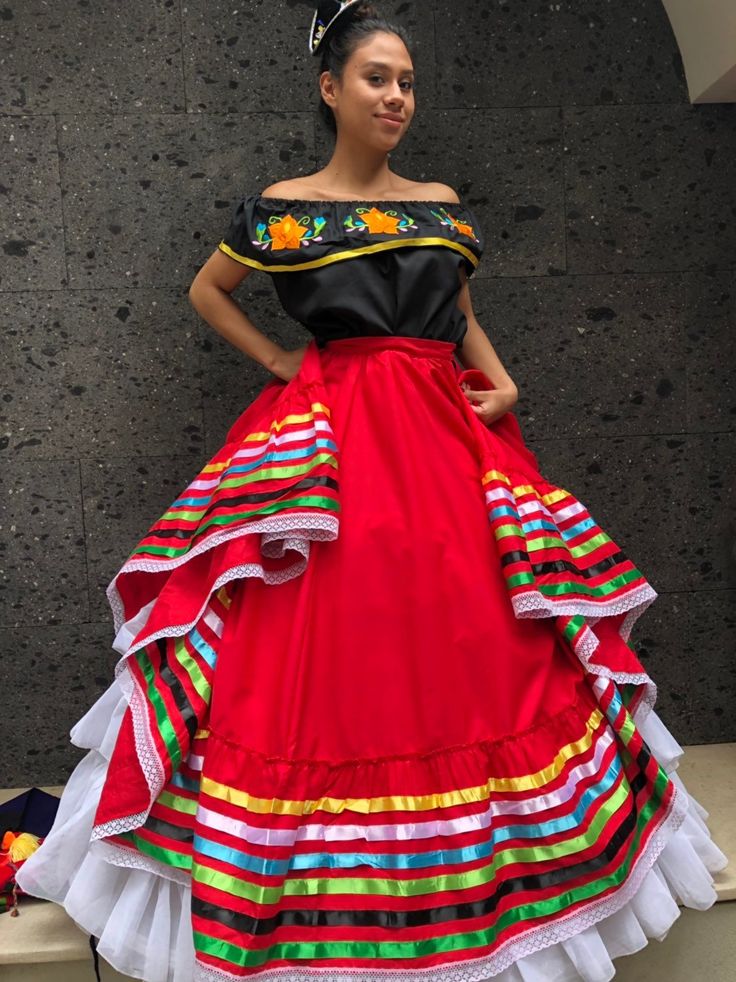
So experiment. Below we provide a few sketches that may give you some directions for your creativity.
a) Cut-off dress along the hip line (top - stretch, taffeta flared bottom), curly hip line.
b) Six-piece dress, puff sleeve + 3/4 fitting, decor: lacing.
a) Costume: six-piece skirt, decorated with frills on the bottom, stretch blouse. The sleeves of the blouse are decorated with frills.
b) Costume: corset skirt (wide belt) with frills. Blouse-stretch with 2-layer sleeves "wings". Decor: lace.
Costume: a skirt with ruffles from the hip, a jacket with flared sleeves.
a) Skirt with figured yoke. The panel of a skirt is typed by "shawl" in 3 layers.
b) Dress (top - body-stretch, bottom - version of a flared skirt with a figured undercut)
[PDF sketches]
Jewelry and accessories
Traditional ornaments of the Spanish dance dress or women's costume include flowers. Both living and "paper" (fabric). They are worn on a dress or in hair. Just in case, below we give an example of a simple rose that can be made from fabric with your own hands and used in various compositions.
Both living and "paper" (fabric). They are worn on a dress or in hair. Just in case, below we give an example of a simple rose that can be made from fabric with your own hands and used in various compositions.
[PDF drawing]
Those who wish to deal with this issue in more detail may be advised to refer to special manuals. Modern editions can be searched in ordinary or online bookstores, such as www.ozon.ru or www.bolero.ru, and old ones can be found on the shelves of grandmothers. We can recommend the book "How to make artificial flowers" by A.M. Ivanovskaya (Perm book publishing house, 1959)
What else can we put our hands on that we might need? Traditional accessories that can be used in flamenco dance include shawls and fans. Their use allows you to emphasize a number of expressive dance movements. In a solo dance, the fan or shawl becomes the dancer's partner.
Shawl
Any shawl can be taken - plain, printed, with or without fringe (fringe, however, is preferable - it beautifully emphasizes movements), etc.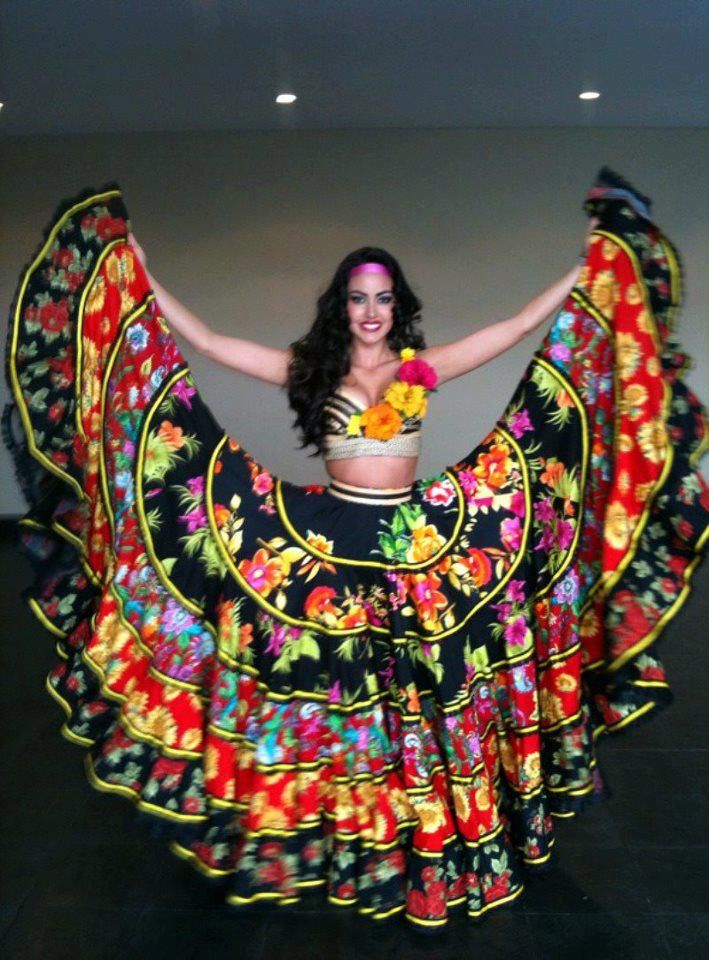 The main thing is that its width (for a half-shawl) or diagonal (for a full shawl) should be approximately equal to the width of the arm span.
The main thing is that its width (for a half-shawl) or diagonal (for a full shawl) should be approximately equal to the width of the arm span.
In addition to the large shawl, which is used in the dance or tied around the hips, Spanish folk dance accessories include the so-called "small shawls", which are thrown over the shoulders and pinned to the dress or jacket with a brooch.
Abanico - Dance fan
Spanish fans are a whole area of arts and crafts. In their manufacture in the past, whalebone, valuable varieties of wood, ivory, various fabrics, precious metals and feathers of rare birds were used. Expensive fans were hand-painted with different subjects, moreover, wood painting, fabric painting, and carving were used. All this is true, but we should not forget that both flamenco and sevillana are based on folk dances. What does it mean - a real Spanish fan should have been available (in purchase or manufacture) to the simple Spanish people. And that means us too.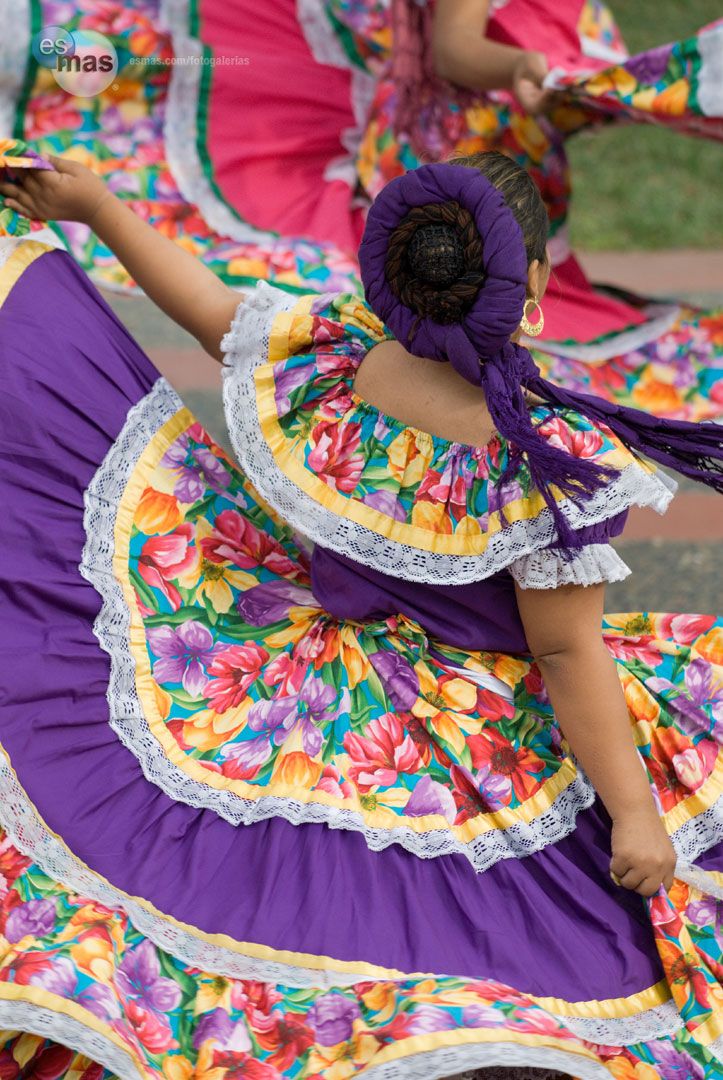 Making a simple do-it-yourself dance fan is quite affordable.
Making a simple do-it-yourself dance fan is quite affordable.
To make a simple dance fan, you will need 18 wooden or bamboo plates, a piece of cloth measuring 30x60 cm, glue and a screw (or rivet) for fastening.
[drawing and description in PDF format]
The basis of the fan - wooden spokes. They are made of hard, relatively light wood (for example: beech, ash) or bamboo. We do not mention the whalebone, from which such plates were made earlier - it is a pity for the whales. Soft (pine) or very heavy (oak) wood will not work. If there is no suitable material in a “raw” form, then 30 cm student rulers can be used to make knitting needles. However, pay attention to what they are made of - pine will not work! In total, 18 plates are needed - 2 “covers” and 16 inner knitting needles. The fan should fully open 180 degrees, so that when laid out on the fabric, they are located relative to each other in 10-degree increments. The diameter of the screw holes can be changed, depending on the diameter of the screw or rivet.
It is better to take a smooth fabric for a fan (silk or synthetics), because it should slide open and close. The fan can be single and double. In the first case, the fabric is glued to the spokes of the fan. Glue carefully, having previously made outlines of the position of the plates on the fabric. Use glue that won't show through the fabric. Please note that fabric is glued to one of the “lids” from the inside so that the fan closes.
A double fan is made from two layers of fabric that are folded together. The spokes of the fan, in this case, are covered with fabric on both sides. The fabric can be either glued to the plates or stitched together. The seams should form grooves into which the inner plates are inserted.
Slightly more difficult to make (cutting is added), but more "authentic" Spanish dance fan is shown in the following drawing:
[drawing and description in PDF format]
The difference between this fan and the model presented above is that its "knitting needles" have a more complex shape:
The inner semicircle of the open fan of this model is formed by the blades of the "spokes".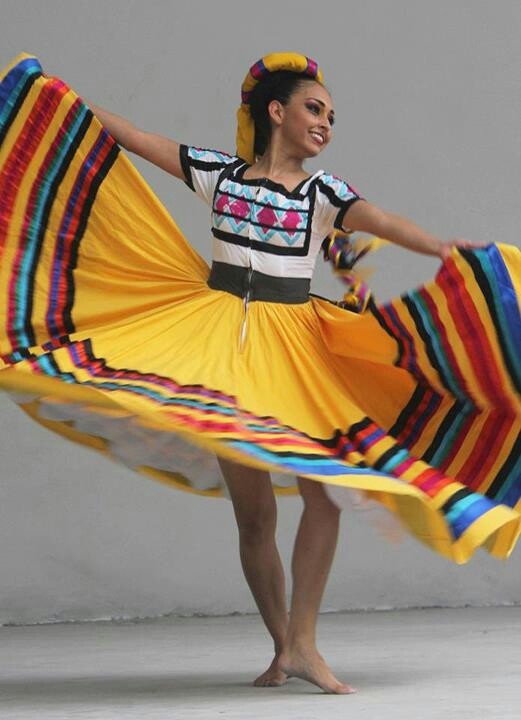

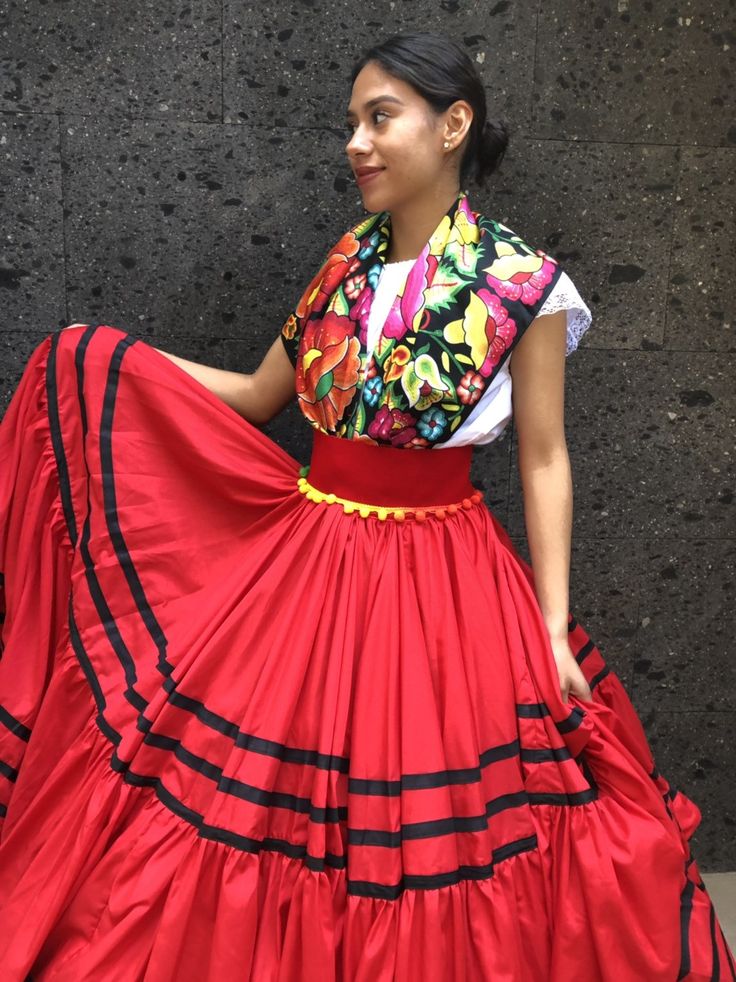 diary.ru/~green-dame-home/p94058786.htm?oam
diary.ru/~green-dame-home/p94058786.htm?oam 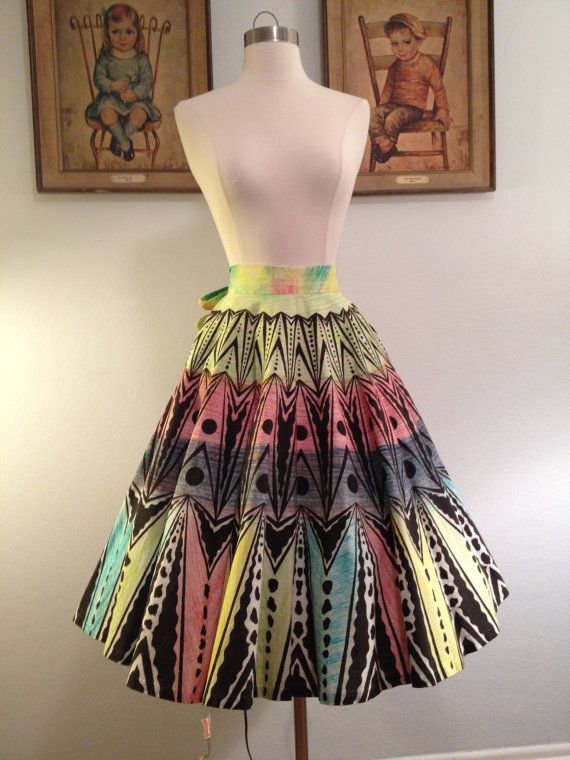
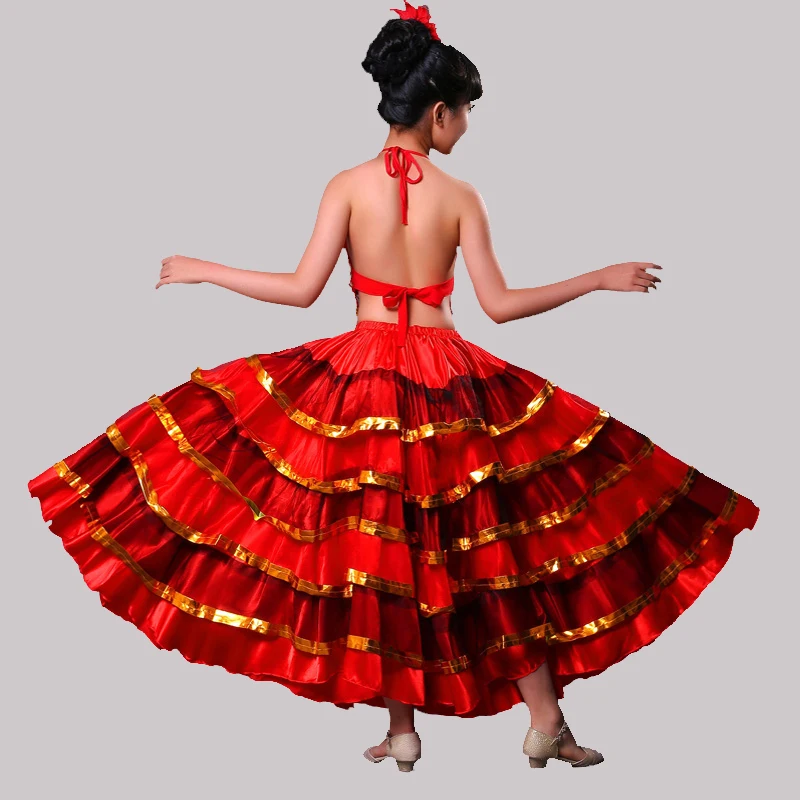 400 meters.
400 meters. 
